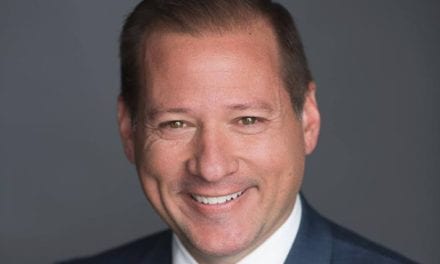Back to Basics | November 2021 Hearing Review
By Marshall Chasin, AuD
It is rare to have a column about a review of an article—especially an article from almost 40 years ago—but the 1983 publication by Skinner and Miller1 is a must-read (or must re-read) article. It describes the work primarily done by Margaret (Margo) Skinner in her PhD thesis.
In this research, Dr Skinner used a master hearing aid to increase the high-frequency gain and output or the low-frequency gain and output independently of each other. One of her most important findings was that, in order to optimize intelligibility (and sound quality) for each increase in the high-frequency region of amplification, one also must apply a corresponding low-frequency increase. In other words, just increasing the higher frequency amplification alone results in less-than-optimal intelligibility (and a “tinny” sound quality).

Margaret (Margo) Skinner, PhD, flanked on her right by David Pascoe, PhD, and on her left by Michael Valente, PhD. Photo: HR archives.
This has been known clinically for years; whenever there is a clinical modification to increase the higher frequency sound transmission—whether acoustically (eg, via a Libby horn) or electronically— one needs to increase the bass response as well in order for the client to accept the sound.
However, Skinner and Miller only used speech stimuli and not music. And, to be fair, only English speech stimuli. It is possible that, in other languages that have greater dependence on lower frequency information (eg, Japanese), this high-frequency/low-frequency balance may not apply.2
The same may go for music—and this is a capstone project waiting to happen. Many of the music programs currently implemented in modern hearing aids seek to increase the bandwidth, especially in the higher frequency region, over the program(s) for speech. This is erroneous for two reasons:
- There is no data that amplified music should have a different frequency response than amplified speech, and
- Based on Skinner and Miller,1 it is possible that a high-frequency increase alone will prove less than optimal unless there is a concomitant low-frequency increase.
If a hard-of-hearing client can tolerate an increased bandwidth in the higher frequency region, this increase should be implemented for all programs (speech and music).
Another facet that is not well-researched (and perhaps another capstone project waiting to happen) is the opposite of the Skinner and Miller study: does the availability of significant low-frequency sound (either electronically amplified or unamplified through a vented/non-occluding earmold system) require a concomitant high-frequency boost? The vast majority of current hearing aid fittings—especially in the most-popular RIC styles (79% of all US hearing aids sold in 2020)3—commonly have ear-tips that are non- or semi-occluding.
The research is clear for music listening: an extended low-frequency cutoff (down to 55 Hz) of the frequency response can be beneficial, but this derives from well-controlled laboratory studies (eg, Moore and Tan4). Extending the low frequencies is accomplished clinically with non-occluding ear tips where unamplified low-frequency sound is allowed to enter the ear canal, bypassing the hearing aid, despite the electronic specification of the hearing aid (as measured by ANSI s3.2) having a 200 or 250 Hz low-frequency cutoff. And if this is allowed for music, according to the results of Skinner and Miller,it is hypothesized there should be an associated high-frequency boost as well.
However, if there are cochlear dead regions that limit the high-frequency response (such as with hearing losses greater than a moderate level1 or steeply sloping hearing losses5), then caution should be exercised with using a non-occluding ear-tip/earmold coupling system that allows for an extended low-frequency cutoff of the hearing aid frequency response. In this case, a narrower frequency response (on both ends) may be better than the “theoretical” wider-frequency response.

Citation for this article: Chasin M. What did Skinner & Miller have to say about hearing aid fittings? Hearing Review. 2021;28(11).
References
- Skinner MW, Miller JD. Amplification bandwidth and intelligibility of speech in quiet and noise for listeners with sensorineural hearing loss. Audiology.1983;22(3):253-279.
- Chasin M. How hearing aids may be set for different languages. Hearing Review. 2008;15(11):16-20.
- Strom KE. Trends in hearing aid styles. Hearing Review. 2021;28(7):6,31.
- Moore BCJ, Tan C-T. Perceived naturalness of spectrally distorted speech and music. J Acoust Soc Am. 2003;114:408.
- Ricketts TA, Dittberner AB, Johnson EE. High-frequency amplification and sound quality in listeners with normal through moderate hearing loss. J Sp Lang Hear Res. 2008;51(1):160-172.




